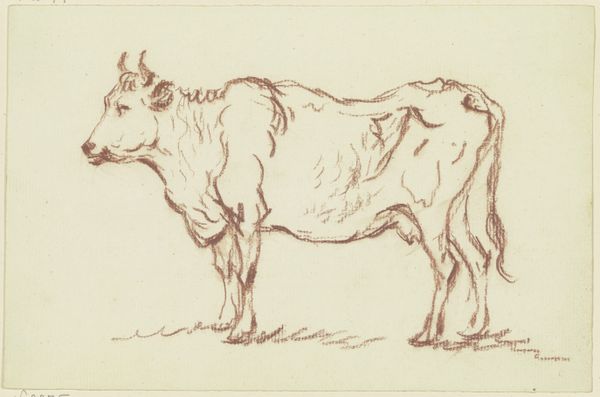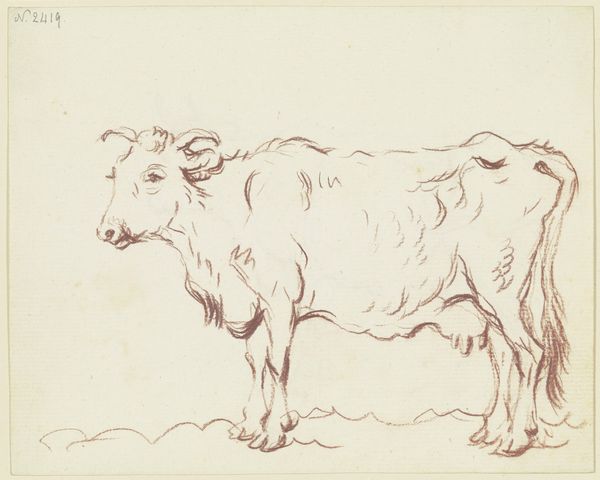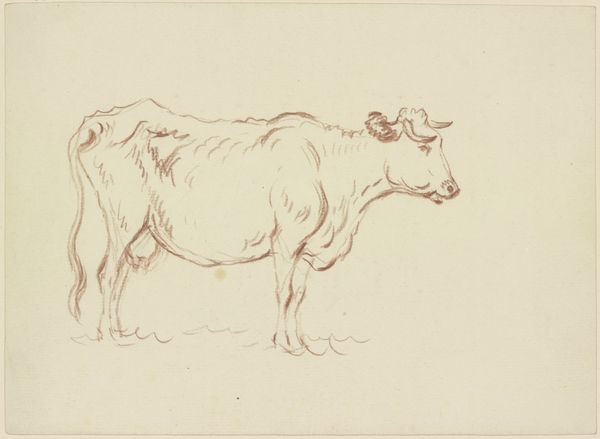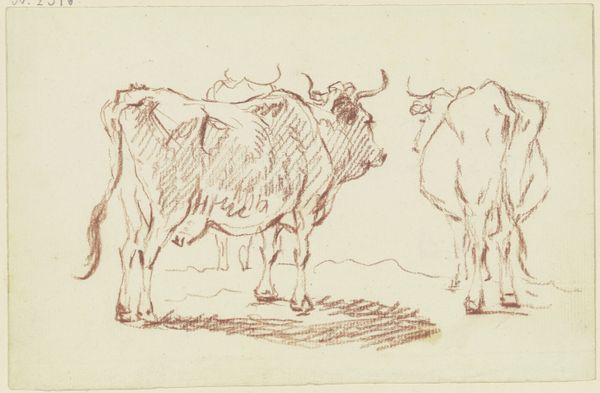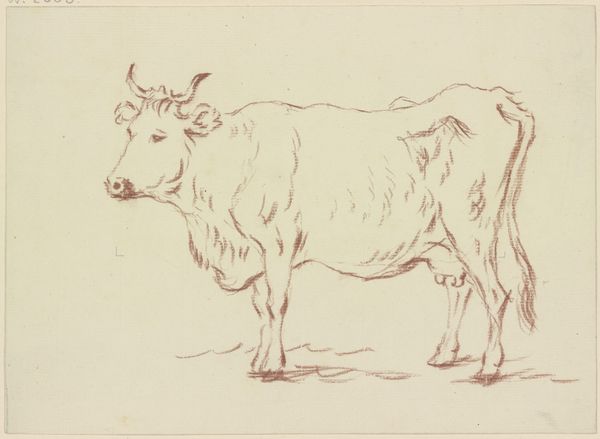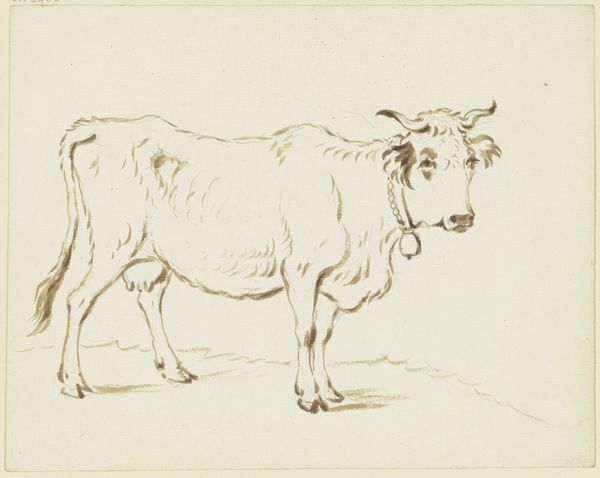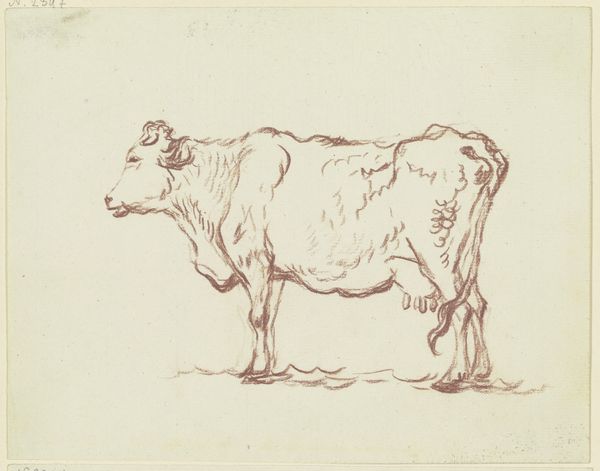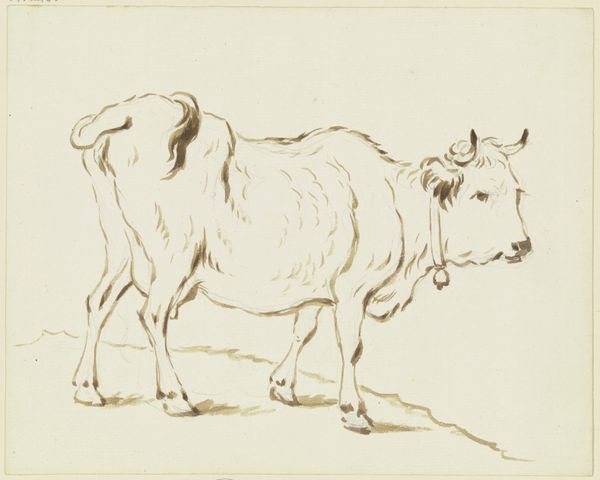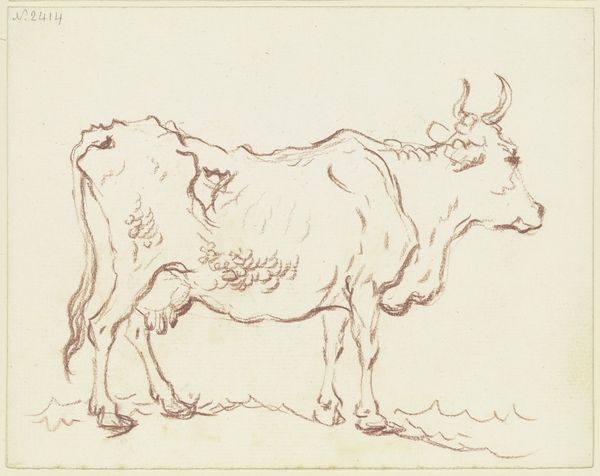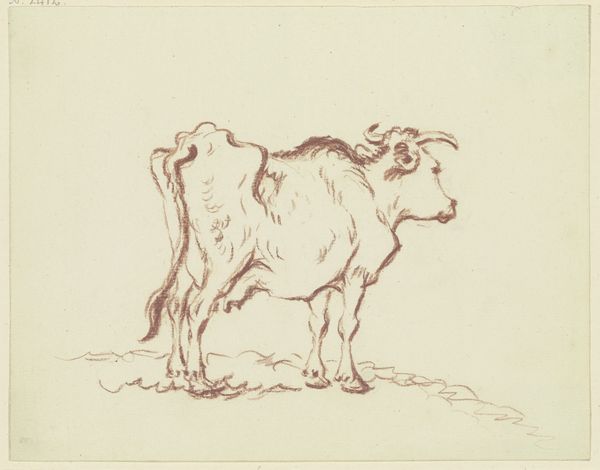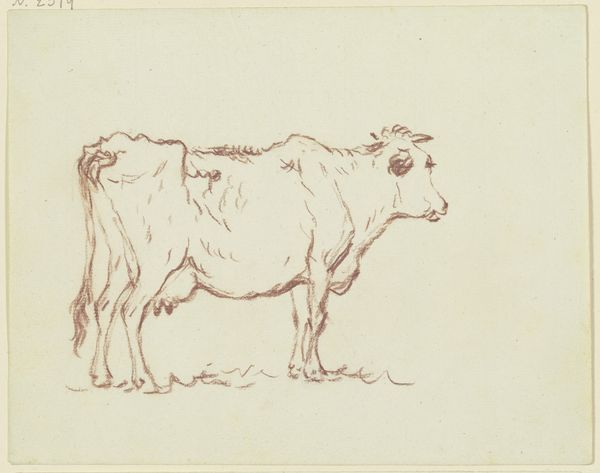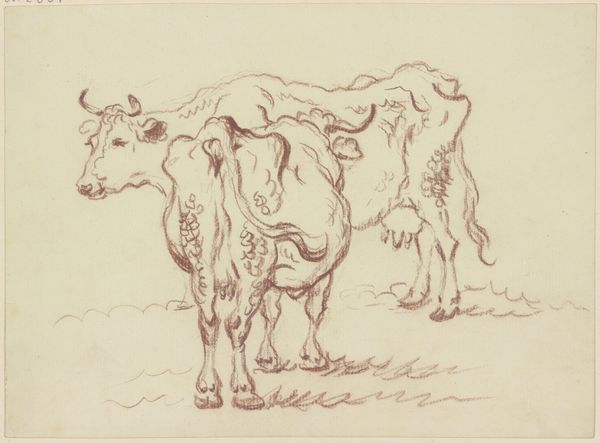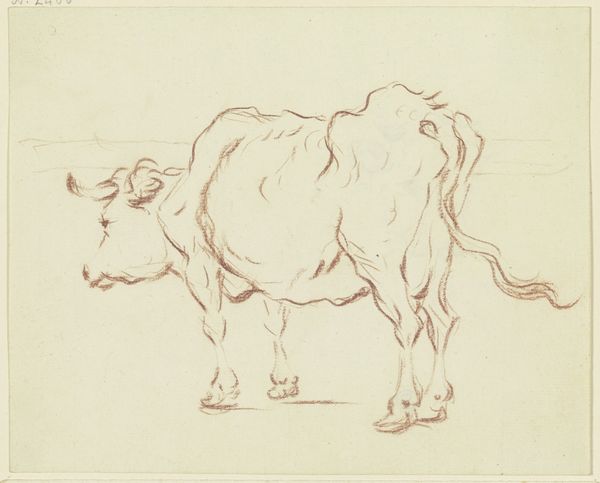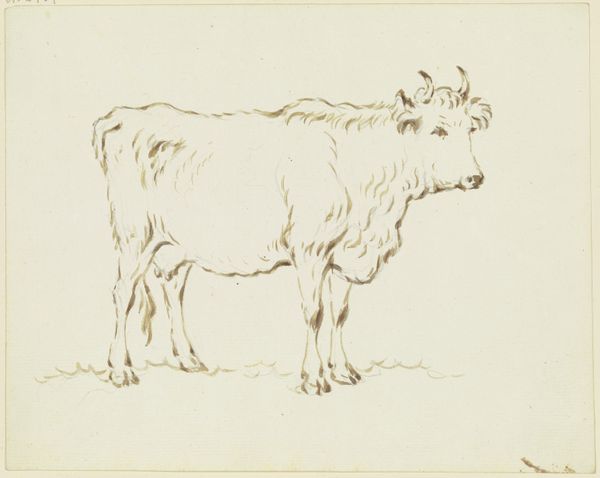
drawing, dry-media, charcoal
#
drawing
#
landscape
#
figuration
#
dry-media
#
charcoal
#
realism
Copyright: Public Domain
Curator: Right, let's dive in. What strikes you first about Friedrich Wilhelm Hirt's "Standing Cow to the Right"? It's a charcoal drawing held at the Städel Museum. Editor: It's the vulnerability, really. That heavy outline gives the cow a very burdened, almost resigned quality. You sense the weight of its existence. Curator: I think that's insightful. The beauty of rendering is the social underpinnings of labor here. The animal is rendered using charcoal. We might reflect on where that material came from—considering historical land use, the deforestation, and the labor needed to create that artistic tool. Editor: Absolutely, we need to consider the context of that making process. But even without that knowledge, there’s something undeniably poignant about how Hirt captures the animal’s form with these quick, almost frantic, strokes. The animal isn't idealized. Curator: No, and it's important that we question any idealization. Historically, images of cows, especially within agrarian societies, are tied to specific patriarchal narratives of agriculture. So, it is important that we, as consumers of this image, are critical of that social history. It's not just about artistic skill; it is also a tool for communicating how agriculture and the consumption of animals function in the social body. Editor: It challenges us to consider animal labor and its effect on climate today. We think of carbon footprints – and there it is embodied, rendered in the traces of burned wood. It brings an ecological sensibility into view. Curator: Precisely. It underscores the links between exploitation of animal life, and the raw materials with which we document that history. Editor: The way Hirt uses charcoal really accentuates the rawness of the subject. The simple strokes force a stark assessment of both our treatment and relationship with this animal. Curator: That's a powerful connection to make. I leave this image, then, considering those dual relationships – that between agriculture, humanity, and exploitation – as one in the same. Editor: And I am left simply pondering the process and production of Hirt's study. Hopefully listeners walk away with new insights regarding our treatment of animal labor and consumption, with our social histories laid bare by materiality.
Comments
No comments
Be the first to comment and join the conversation on the ultimate creative platform.
